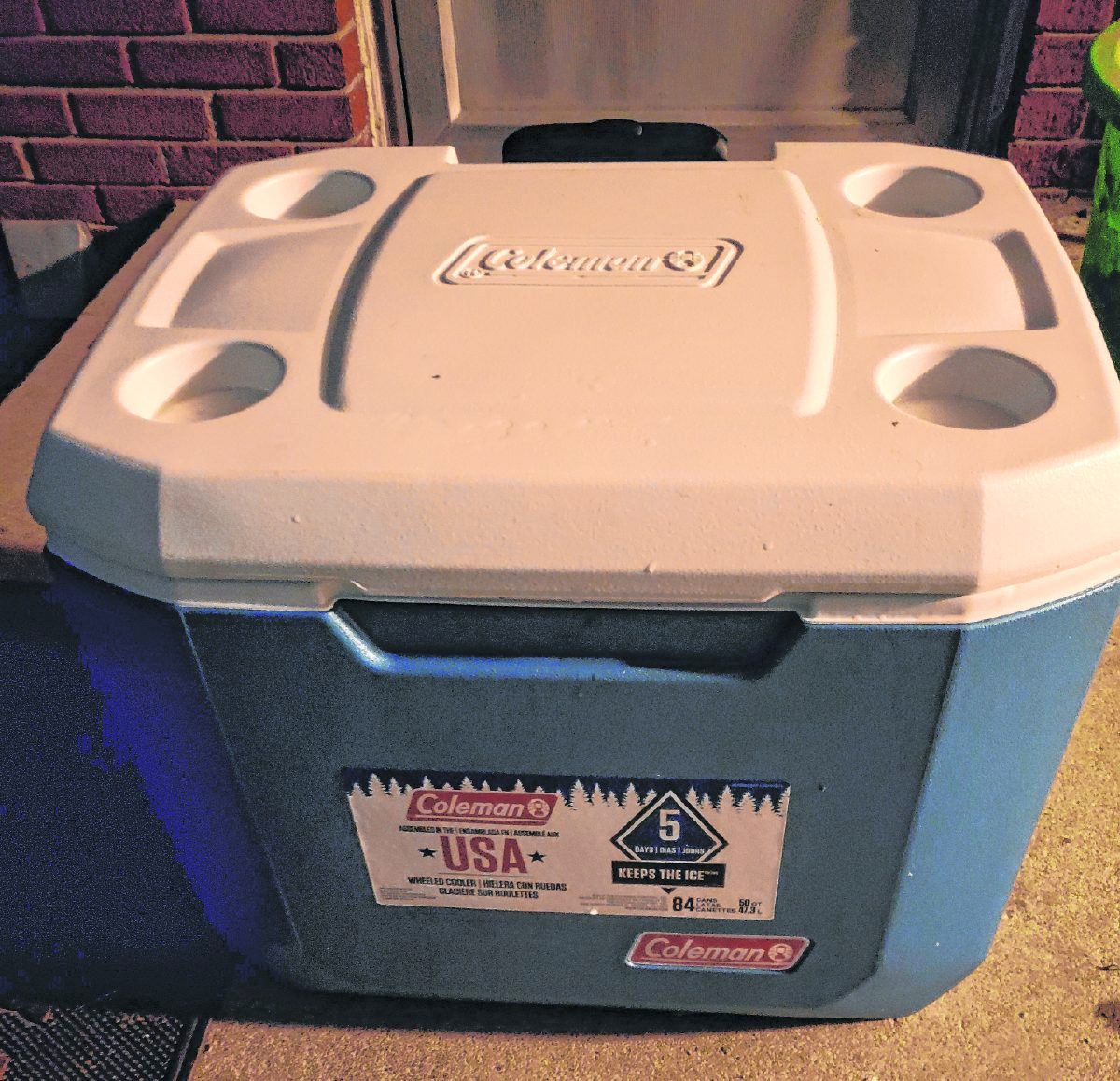
Everything was in place.
The final destination cone was mounted on the outside wall of the barn, the turkey fryer burner with attached propane tank was hooked up with scalding pot perched atop filled with fresh water, a gray pop-up tent was erected protecting the freshly sanitized processing table beneath from the morning sun and a razor-sharp knife and kitchen shears were positioned neatly at the edge of the table.
The cooler filled with ice and water sat at the ready at the end of the line, ready to receive the bounty that was to come soon.
The guests of honor at this party had been calmly captured, held in a shady spot on cool grass. Everything was set. All that needed to happen was to light the burner to get the water going and we were ready to begin processing chickens.
[sc:text-divider text-divider-title=”Story continues below gallery” ]
Moments before my father arrived on the farm, I took a lighter in hand to start the burner. This was going to go like clockwork — calm, smooth and quickly.
There was one minor problem: The apparatus would not light.
Dad had arrived by this point, and I explained the trouble to him. After multiple hooking up and unhooking up of the components of the burner and perhaps a few words under my father’s breath and under my breath that our ideas were right and the other was not “getting it,” the conclusion was finally that the propane tank held a new valve that was not compatible with the old connection on the burner.
Such began the most drawn-out poultry processing I have done so far.
Several hours later, multiple trips to Tractor Supply to purchase supplies and then find out they were the wrong supplies, I finally gave into the idea that I needed to find another turkey fryer and quickly so it had the more modern connection on the burner for the LP tank.
The birds, getting a pardon of a few more hours to nibble on the grass below their feet, had to be moved in the meantime out of the sun, which had since encroached into the shade that the birds had enjoyed some time before.
An event that was to take no more than two hours quickly turned into an all-daylong event. Gone was the calmness of a well-organized processing area and the idyllic event I had dreamed up of reviving some memories for my father and also getting the all-important competition of who did it best with sending the bird to the big chicken coop in the sky.
My father retreated from the farm for a while to get some things completed in town, and I made the trip to Columbus to purchase a new fryer. Thankfully, that was secured quickly, but upon coming back home, I realized “some assembly” was required. Great. More time spent not processing.
I got the fryer assembled and walked back to the processing area. The wind had picked up by this point, and it was no longer cool but rather very hot and humid with the late afternoon sun. The birds eyed me as I hooked up the new fryer to the propane tank and turned on the gas with butane torch in hand.
In the interest of time, I’ll just say there were problems with this apparatus, as well, which involved another trip to the store to get triple A batteries, but finally, the burner lit and the water got to the proper temperature for scalding, which is the process of removing feathers.
I began my processing with the first two birds and got them nicely tucked into an ice water soak when my dad returned and dispatched the third bird in the “most humane” way (his words). I won’t go into great detail, but I will say his way involves a lot of arm strength and the removal of a vital part of the chicken.
His way was interesting, to say the least, and I will give that it got the job done, but wow what a cleanup in the processing.
I acknowledged his effort with encouragement but then felt I needed to show him “how it’s done these days.” Again, not going into great detail, but it does involve a metal cone. If you’re not squeamish, you can check this method out on YouTube.
My father also acknowledged my efforts but said this way took too long. I like to think the chicken didn’t suffer any more than his method and the cleanup was minimal with processing; however, both of us had bragging rights to fight for, so I don’t think either of us would have conceded completely that one method was better over the other.
So the great question of “who did it best” remains. My father’s method has been used for hundreds of years and probably is the biggest memory people share with me about raising chickens for food. My method is a bit more recent and isn’t quite as dramatic as the former. Either way, both methods have the same end result and is a part of raising birds for meat.
At the end of the day, all that matters is that suffering was minimalized and the freezer is nice and full. I still say my method is better. Sorry, Dad. Until next time…
Stephanie Strothmann owns Purple Shamrock Farm LLC in rural Seymour. Read her blog at whattheclucker.blogspot.com. Send comments to [email protected].
